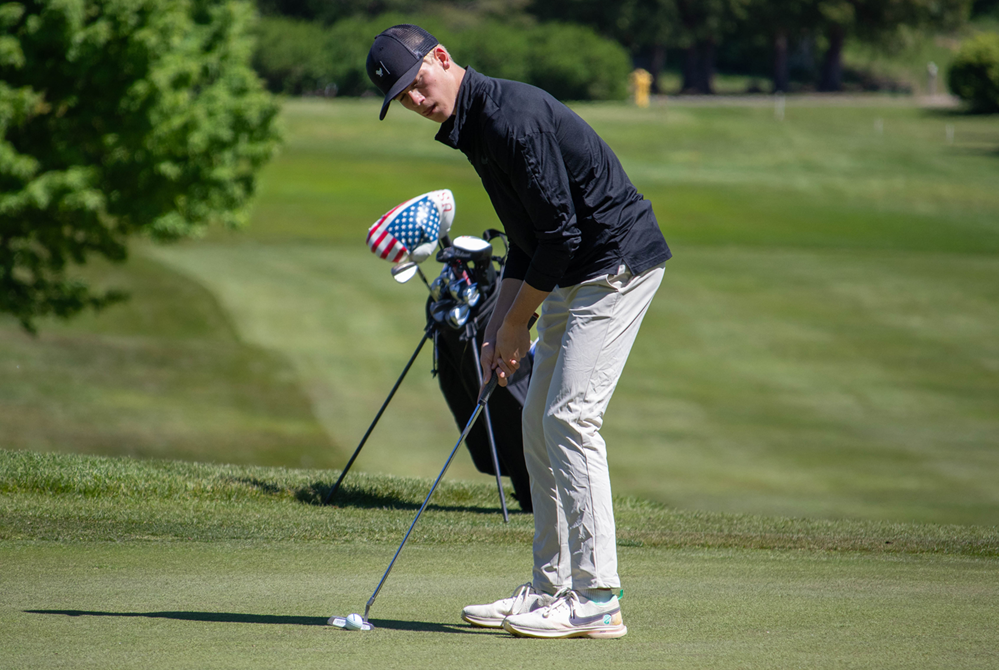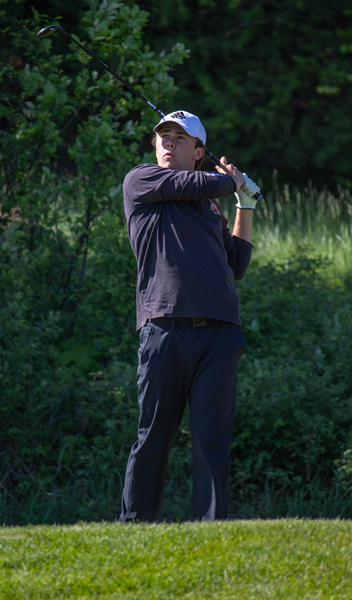
Casting Lines for Future Tournaments
August 12, 2016
By Jack Roberts
MHSAA Executive Director
The MHSAA is best known to the public for the tournaments it conducts to conclude the fall, winter and spring seasons each school year.
These tournaments, the first and largest program of the MHSAA, have survived the Vietnam War, the Korean conflict and two World Wars. They have survived the technology bubble, the housing collapse, the energy crisis and the Great Depression.
MHSAA tournaments existed at the dawn of aviation and at the time of our nation’s lunar landing. Popes, presidents and governors have changed and changed again and again, and MHSAA tournaments roll on year after year.
But the sense of tradition and permanence and inevitability of MHSAA tournaments doesn’t dissuade us from asking questions about our tournaments, even some of the most basic questions. Here are two.
Question #1
I have long been and will always be an advocate for a Ryder Cup format for the MHSAA Golf Finals, and a team tennis approach to the MHSAA Tennis Finals; but 90 years of tradition is hard to overcome. Might this be a more exciting format? Could it be co-ed? Could it reverse the decline in boys tennis participation, and increase girls golf participation? Wouldn’t it be fun to try?
Periodically, the International Olympic Committee requires each of the designated Olympic sports to defend its status, to state its case why the sport should remain a part of the Olympic program. Then, after a series or votes that retain one sport at a time, the IOC drops the sport that makes the weakest case. It does so to make room for one of the previously unlisted sports that makes the best case for inclusion.
This would appear to keep the existing Olympic sports on their toes, and to keep the Olympic movement fresh and reflective of modern trends in sports.
While I would not enjoy the controversy, I can see the potential for some positive results if the MHSAA were to invoke the same policy for determining the 14 tournaments it will provide for girls and the 14 for boys.
This might cause us to consider more deeply what a high school sport should look like, or at least what an MHSAA tournament sport should stand for.
On the one hand, we might be inclined to drop tournaments for those sports that involve mostly non-faculty coaches and non-school venues, or require cooperative programs to generate enough participants to support a team, or resort almost entirely to non-school funding, or cater to individuals more than teams.
Or perhaps this process would cause policymakers to forget traditional thinking and ask: “In this day and age, should we shake off traditional notions of sport and consider more where modern kids are coming from?” That might mean fewer team sports and more individual sports, more “extreme” sports like snowboarding and skateboarding, and more lifetime sports, meaning not just golf and tennis and running sports, but also fishing and even shooting sports.
Currently, MHSAA policy states that the MHSAA will consider sponsorship of a tournament series for any sport which 64 member schools conduct on an interscholastic basis as a result of action by the governing boards of those schools.
Should the only question be how many schools sponsor a sport, or must an activity also have certain qualities and/or avoid certain “defects?” What should an MHSAA tournament sport look like and stand for?
Question #2
Bristling from criticism that his association is a money-grabbing exploiter of children, my counterpart in another state said, “If we were running our programs just to make money, we would do very many things very differently.” I knew exactly what he meant.
Because we care about the health and welfare of students, because we mean what we say that the athletic program needs to maximize the ways it enhances the school experience while minimizing academic conflicts, and because we try to model our claim that no sport is a minor sport when it comes to its potential to teach young people life lessons, we operate our programs in ways that make promoters, marketers and business entrepreneurs laugh, cry or cringe.
If money were the only object, we would seed and select sites to assure the teams that attracted the most spectators had the best chance to advance in our tournaments, regardless of the travel for any team or its fan base. If money were the only object, we would never schedule two tournaments to overlap and compete for public attention, much less tolerate three or four overlapping events. If money were the only object, we would allow signage like NASCAR events and promotions like minor league baseball games.
Those approaches to event sponsorship may not be all wrong; they’re just not all right for us. And we will live with the consequences of our belief system.
During a typical school year, more than 20 percent of the MHSAA’s 2,097 District, Regional and Final tournaments lose money. Not a single site in golf, skiing or tennis makes a single penny. In no sport did every District, Regional and Final site have revenue in excess of direct expenses.
In fact, in only three sports – boys and girls basketball and football – is revenue so much greater than direct expenses overall that it helps to pay for all the other tournaments in which the MHSAA invests.
That’s right: invests. When we present our budget to our board, we talk about the MHSAA’s investment in providing tournament opportunities in all those sports and all those places that cannot sustain the cost of those events on their own. How much is this investment worth to students, schools and society?
These two are core questions that require our focus far in advance of talk about scheduling, site selection, seeding and the myriad matters that too often hijack our time and attention.

Chipelewski Leads Talented Marquette Lineup to Impressive Title-Clinching 300
By
Caden Sierra
Special for MHSAA.com
May 30, 2024
MARQUETTE — The Marquette boys golf team showcased its depth while taking advantage of its home Marquette Golf Club course Wednesday to capture the team title at the MHSAA Upper Peninsula Division 1 Final
The young Sentinels separated themselves from the competition by more than 20 strokes, taking the top spot with an impressive four-player score of 300 while placing three of the top five individuals. They beat out runner-up Houghton, which had 321, and third-place Escanaba with 325.
Manistique came in fourth with 332 strokes, followed by Calumet in fifth with 333.
“These kids put in a ton of time, and we had a lot of depth,” veteran MSHS head coach Ben Smith said right after the result was determined. “Not only playing here today, but a lot of kids who have been in matches and played really well throughout the spring.
“It’s never easy … 300 is a really good score, and I'm really proud of the kids and the effort that they put in.”
 The Sentinels’ Kaleb Chipelewski won the medalist honor by topping the leaderboard with 72 to edge teammate Boden Moore by a single stroke. The tight race for the top was followed by Baraga’s Cage Osterman just another stroke back at 74, with three more golfers tying for fourth with 75 — Marquette’s Jack Pond, Houghton’s Brenden Jukuri and Escanaba’s Shane Wallin.
The Sentinels’ Kaleb Chipelewski won the medalist honor by topping the leaderboard with 72 to edge teammate Boden Moore by a single stroke. The tight race for the top was followed by Baraga’s Cage Osterman just another stroke back at 74, with three more golfers tying for fourth with 75 — Marquette’s Jack Pond, Houghton’s Brenden Jukuri and Escanaba’s Shane Wallin.
“I played really good; my (place) was high,” Chipelewski said. “Just came in, birdies on (Nos.) 2 and 3. Then bogeyed (Nos.) 7, 11 and 12, scored a couple more. It was really nice.”
Moore was both happy and a bit frustrated after coming so close to the top.
“I hit the ball really well, played really well, just couldn't get a putt to go in pretty much,” the runner-up said. “I ate a bunch of pars, but the team had a great round, so it (is) a good win.”
Pond had his own take on the Final, making a reference to NBA legend Michael Jordan — perhaps an unusual reference for someone who wasn’t even born when the famed Chicago Bulls player won his half-dozen league titles.
“It was like my MJ-flu-type game,” he said, referring to the time Jordan was sick but still gutted out one of his best games in the finals. “Started off slow, shot a good score on the back nine for how tough it was out there. I started off hot with 1-under(-par) through (No.) 6 and then finished with a few bogeys, but ended up being a really good day overall."
The entire top 10 — actually a top 13 with a big logjam around 10th place — all shot in the 70s.
After the logjam for fourth, Westwood’s Tanner Annala was next in seventh with 76, while Escanaba's Graham Johnson was eighth with 77. Then came a five-way tie for ninth, each with 79 — Jonah Slawinski of Menominee, Ben Anderson of Calumet, Marino Pisani of Houghton, Carson Kronemeyer of Sault Ste. Marie and Landen Dougherty of Manistique.
Marquette's Pavel McCutcheon and Kingsford senior Lance Harry came right in at 80 to tie for 14th place.
“These kids have pretty good nerves and hang in there when there are some tough stretches,” Smith said. “They play some high-quality golf when they need to, and it was really nice to see them do that today.”
PHOTOS (Top) Marquette's Kaleb Chipelewski addresses his putt on the ninth hole during the MHSAA Upper Peninsula Division 1 Final on Wednesday at Marquette Golf Club. (Middle) Houghton’s Marino Pisani watches his tee shot on the first hole. (Photos by Caden Sierra.)

